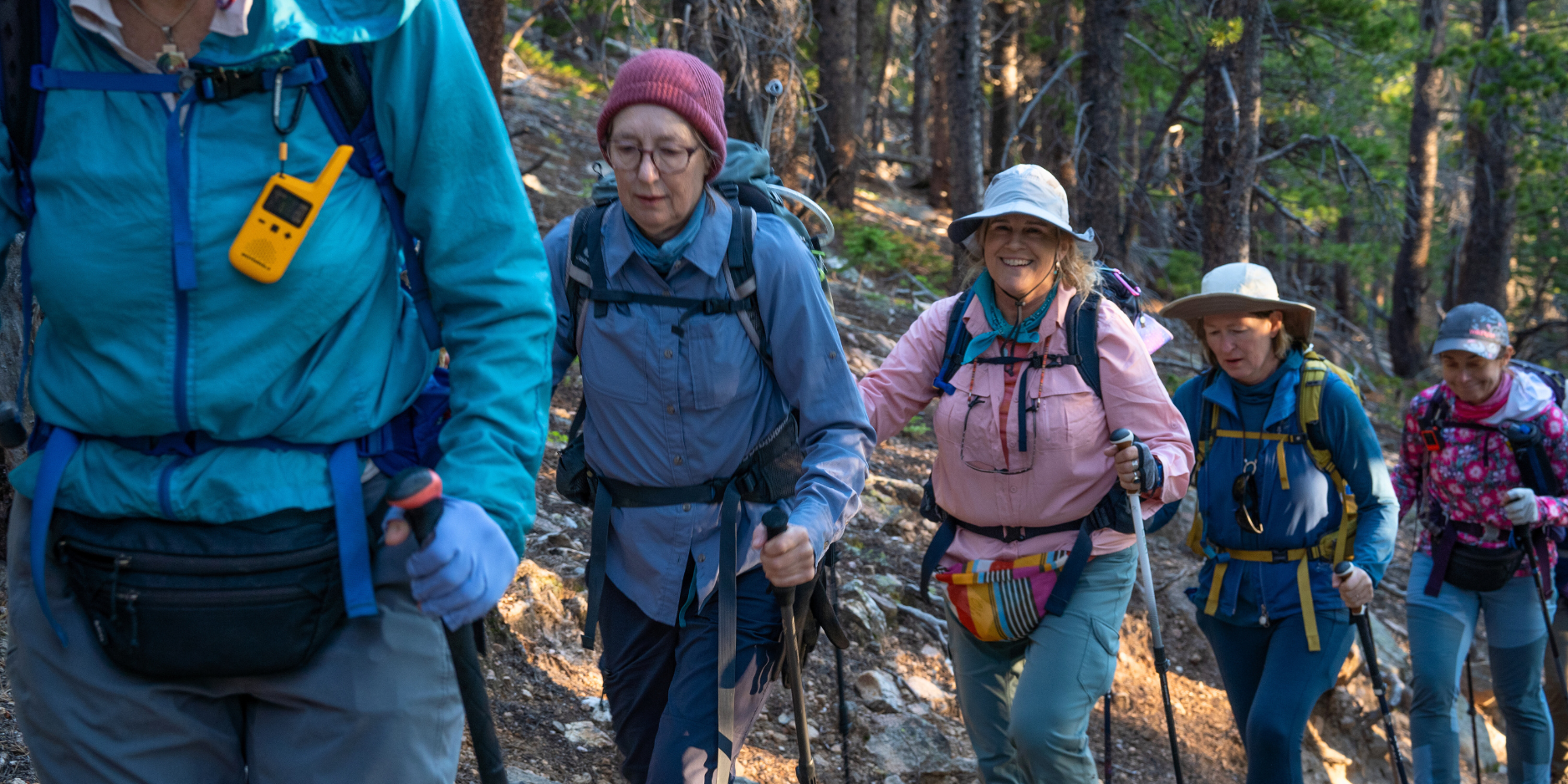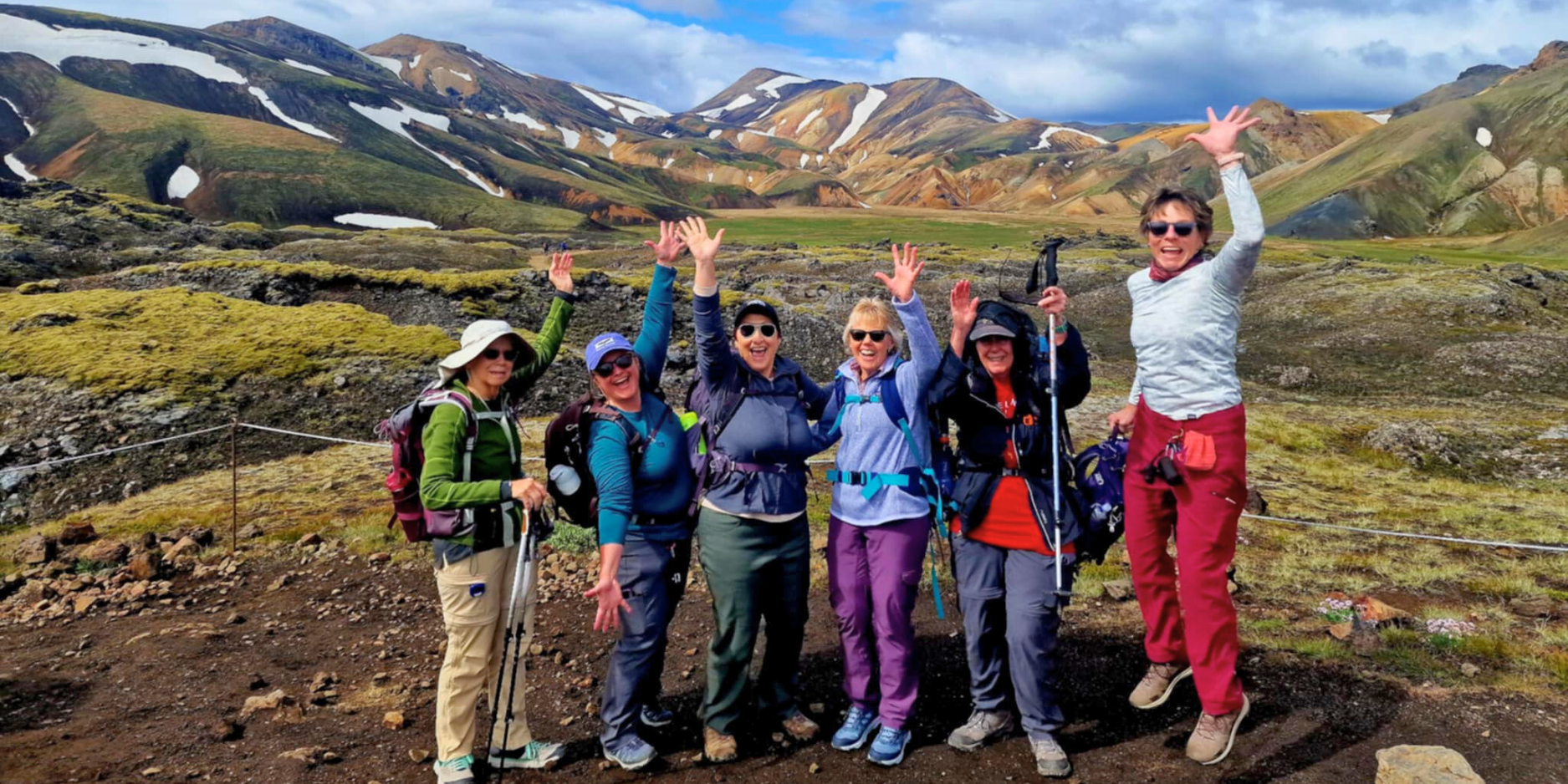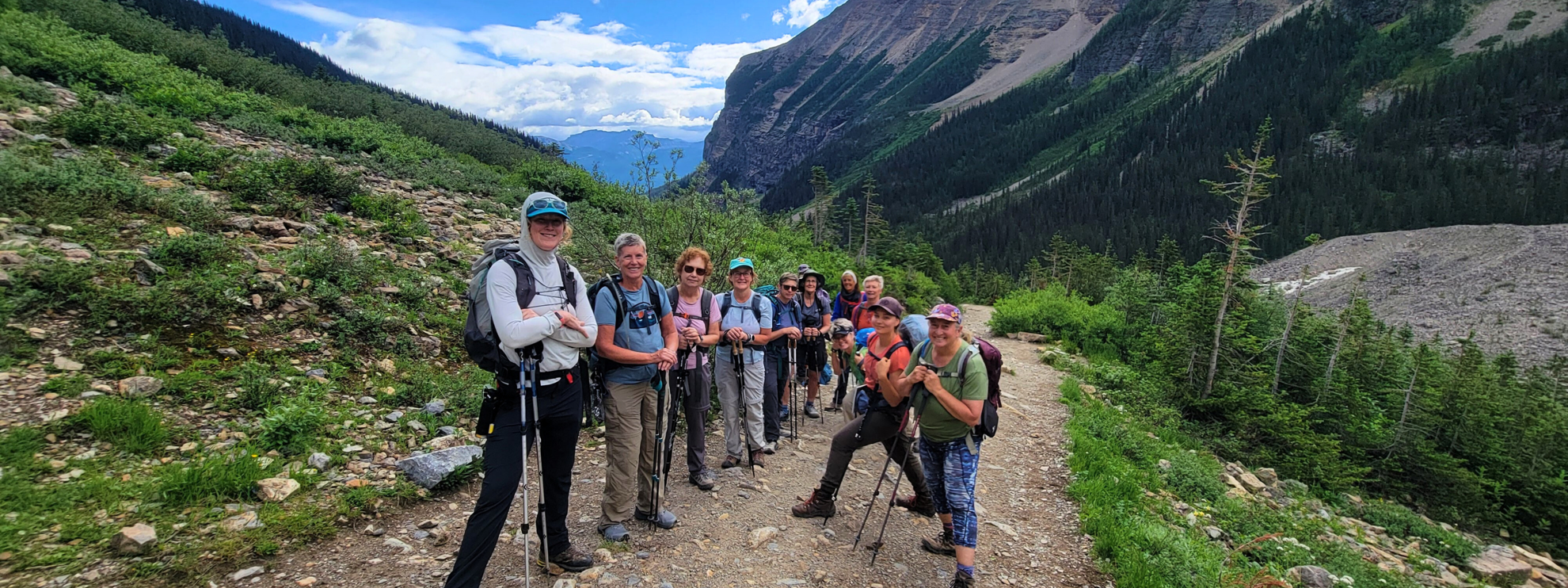We’re big advocates of using trekking poles on nearly every hiking, trekking, or backpacking adventure. They enhance your experience by offering stability, boosting endurance, and reducing strain on your knees. In this guide, we’ll cover everything you need to know about these reliable hiking partners, from choosing the right pair to using rubber tip protectors and traveling with them.

Why Use Trekking Poles:
-
Improve balance and stability
-
Reduce impact on knees and ankles
-
Help conserve energy by transferring work to your arms and chest
-
Offer additional points of contact to prevent falls
Using poles takes up to 20% of the weight off each side as you step, making long-distance hiking more efficient and safer.

How to Choose the Right Pair of Trekking Poles:
Try Before You Buy: If you’re new to trekking poles, consider borrowing a pair from a friend or trying them on an AGC hiking trip. You’ll learn how to use them, get recommendations, and see what other hikers prefer. This would allow you to see what other hikers have chosen for their poles and help you make a more informed decision regarding the “perfect” pair of poles for you.
If you're ready to buy, here are the key feature to consider:
1. Weight
The lighter, the better! You’ll lift your poles thousands of times during a hike, so even small weight differences matter. Factors influencing weight include:
There are several factors that influence the weight of your poles, including the following:
-
Material (carbon fiber vs. aluminum)
-
Locking mechanism
-
Presence of shocks or baskets
-
Grip material
2. Pole Adjustment Mechanism
A reliable locking system ensures your poles won’t collapse mid-hike. Lever-locking mechanisms tend to be easier to adjust on the go, especially in cold or wet conditions. Here is a full list of the common locking systems include:
-
Lever Lock
-
DuoLock
-
Twist Lock
-
Super Lock System
-
Stop Lock
All of these locking systems weigh about the same, so make sure you understand your particular locking system and can operate it well under the conditions in which you will be using the poles.
3. Sections
Poles that collapse into three sections are ideal for carry-on luggage and compact gear packing. Poles typically come in 2- or 3-section designs:
-
3-section poles break down smaller for travel
-
2-section poles may be sturdier (great for mountaineering or skiing)
4. Material
The most common materials used for hiking poles are aluminum or carbon fiber. If you tend to hike in rocky or rough terrain, aluminum’s durability can be worth the slight weight penalty. Carbon fiber is a lighter-weight option.
-
Aluminum: Durable, slightly heavier
-
Carbon fiber: Lightweight, often more expensive
5. Grips
Choose grips based on personal comfort and conditions. Foam is often the favorite for warm-weather hikes, while cork offers long-term comfort and moisture resistance.
-
Rubber: Best for cold weather (insulates from cold, repels moisture)
-
Cork: Comfortable, molds to hands, less moisture-absorbent
-
Foam: Soft, cool, moisture-absorbent
6. Pole Height
Make sure your poles suit your height and activity. Some come in regular or tall versions; some are adjustable. Poles that extend for downhill hikes can reduce knee strain.
Suggested pole lengths:
-
Under 5’1”: 100 cm (39 in.)
-
5’1” to 5’7”: 110 cm (43 in.)
-
5’8” to 5’11”: 120 cm (47 in.)
-
6’+: 130 cm (51 in.)
7. Wrist Straps
Proper use of wrist straps allows your wrists to absorb the pressure instead of your hands, reducing fatigue.
8. Baskets
Unless you’re hiking in snow or loose sand, remove the baskets. They can get in the way on rocky or narrow terrain.
9. Intended Use
Are you using poles only for hiking, or will you also snowshoe or backpack? Most high-quality poles work across different activities, but know your primary use case.
 to Use Rubber Tip Protectors.png)
When and Why to Use Rubber Tip Protectors
Rubber tips slide over the metal tips of your poles. They're great for:
-
Solid terrain like pavement or rocks (protects both your poles and the trail)
-
Noise reduction, no annoying clicking sounds
-
Minimizing environmental impact (Leave No Trace)
-
Trail regulations (some areas require rubber tips)
-
Safety in crowded areas (reduces risk of accidental pokes)
When to remove rubber tips:
-
On unimproved trails, dirt, mud, snow, or ice the metal tips offer better grip
Fun fact:
There are various rubber tip styles:
-
Boot-shaped for fitness walking
-
Bell-shaped for extra stability
-
Standard for hiking
Treat them like you would different shoes for different terrains.

How to Travel with Trekking Poles
Wondering how to fly with trekking poles? Whether you're heading out on an international backpacking trip or a weekend hiking getaway, knowing how to pack your poles can help you avoid surprises at the airport.
Can you carry them on a plane? Technically, TSA rules prohibit poles in carry-on luggage. That said, some travelers have gotten them through if packed disassembled and diagonally inside a carry-on. Be prepared to check your bag if needed.
Safer bet:
-
Pack them in a checked bag
-
Ship them ahead of time (can be expensive)
-
Buy or rent at your destination
Pro tip: Most trekking poles break down small enough to fit into most travel packs when disassembled.

Frequently Asked Questions
Q: What’s the difference between hiking poles and trekking poles? A: Nothing! They’re different names for the same thing. Hiking staffs (single poles) are different and less common.
Q: Who makes the best trekking poles? A: Top-rated brands include Black Diamond, Leki, Trekology, TrailBuddy, MSR, and REI. But the best pole is the one that fits you best.
Q: What’s the best length for hiking poles? A: See the "Pole Height" section above. Test before buying to ensure a good fit for your arms and stride.
Q: Should I use trekking poles if I have knee issues? A: Yes! Trekking poles significantly reduce the impact on knees—especially on descents.
Q: Can I use trekking poles for snowshoeing? A: Absolutely. Just swap in snow baskets and make sure the poles are adjustable for different snow depths.

Final Thoughts on Adding Trekking Poles to Your Gear
Trekking poles make hiking more enjoyable, safe, and sustainable. With the right pair, you’ll reduce strain on your body, boost confidence on tricky terrain, and even improve your posture and endurance.
Test a few pairs, ask fellow hikers, and don’t be afraid to start simple. Your next adventure with trekking poles is just a step away. Where will they take you?
Want to learn how to use trekking poles in real life? Join us on an AGC hiking tripand learn from expert guides in the field!



